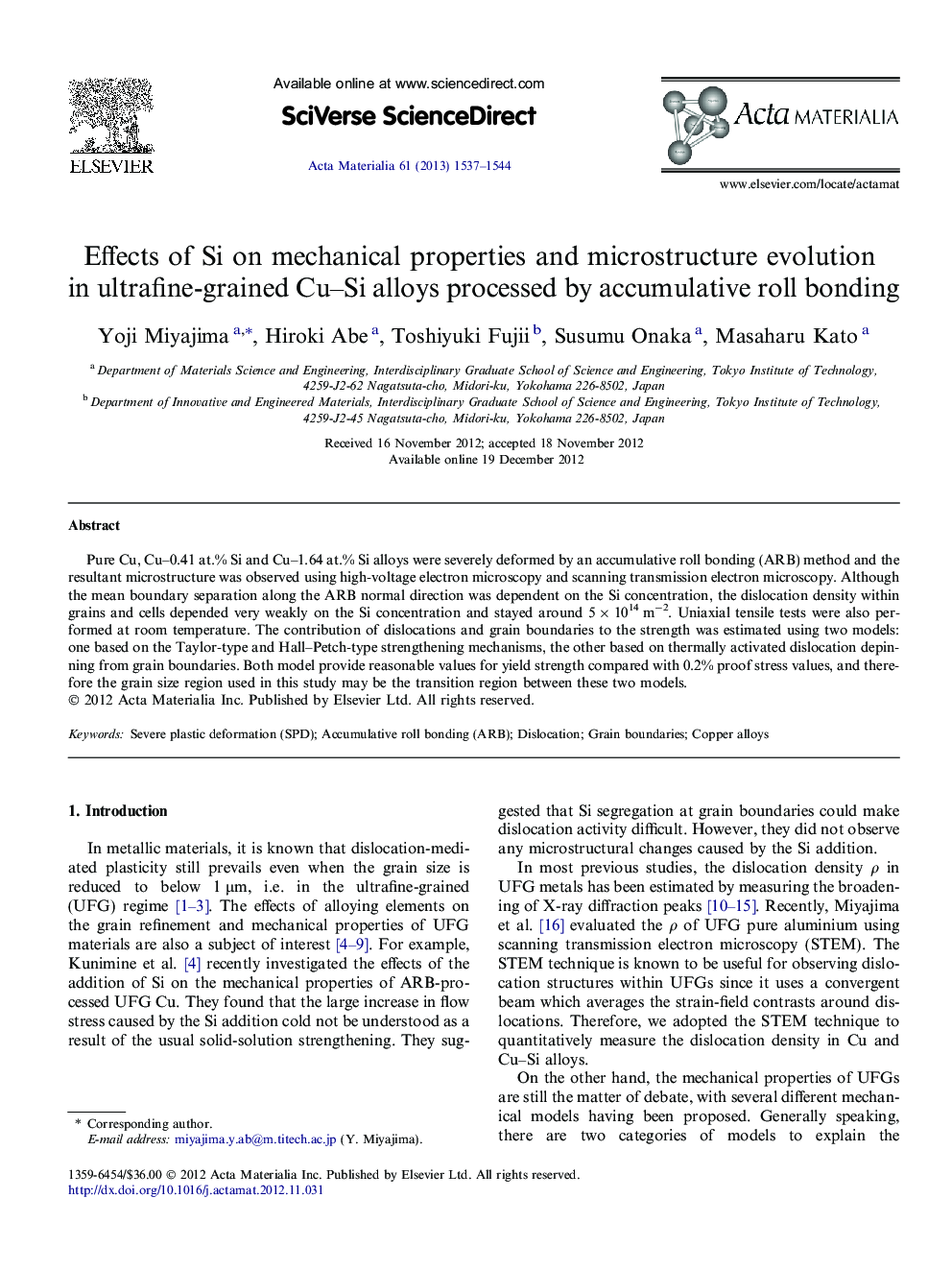| Article ID | Journal | Published Year | Pages | File Type |
|---|---|---|---|---|
| 1445998 | Acta Materialia | 2013 | 8 Pages |
Pure Cu, Cu–0.41 at.% Si and Cu–1.64 at.% Si alloys were severely deformed by an accumulative roll bonding (ARB) method and the resultant microstructure was observed using high-voltage electron microscopy and scanning transmission electron microscopy. Although the mean boundary separation along the ARB normal direction was dependent on the Si concentration, the dislocation density within grains and cells depended very weakly on the Si concentration and stayed around 5 × 1014 m−2. Uniaxial tensile tests were also performed at room temperature. The contribution of dislocations and grain boundaries to the strength was estimated using two models: one based on the Taylor-type and Hall–Petch-type strengthening mechanisms, the other based on thermally activated dislocation depinning from grain boundaries. Both model provide reasonable values for yield strength compared with 0.2% proof stress values, and therefore the grain size region used in this study may be the transition region between these two models.
